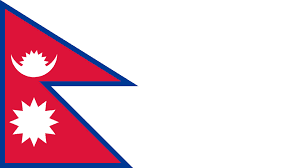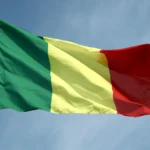
Nepal is a landlocked South Asian country. The Federal Democratic Republic of Nepal is its official name. It has a total area of 147,181 square kilometers. Kathmandu is the capital city. Nepal’s official language is Nepali, and its official currency is the Nepalese Rupee (NPR). It shares borders with two countries: India and China. In terms of natural beauty and cultural diversity, Nepal is unlike any other country.
Nepal is known as the “ceiling of the world” because it is home to eight of the world’s ten highest mountains, including Mount Everest, Kanchenjunga, Lhotse, Makalu, Cho Oyo, and Dhaulagiri. Nepal contains a sizable portion of the Himalayas.
Nepal, the world’s last Hindu country, was declared secular by its parliament in 2006. It still has the world’s highest proportion of Hindus among its population today. Cows are considered sacred in Nepal, and it is illegal to kill one; it is also the country’s national animal.
Nepal does not observe an independence day because it has never been occupied by a foreign power. The country is the oldest in South Asia. Nepal was a monarchical monarchy until 2008, when it became a federal democratic republic.
Nepalese people greet each other by placing their palms together. They bow their heads and say “Namaste,” as is customary in neighboring India. This literally translates to “I salute the God within you.”
Within a 15-kilometer radius of Kathmandu, there are seven UNESCO World Heritage Cultural Sites. It has been dubbed the world’s living cultural museum. Furthermore, Nepal has four UNESCO World Heritage Sites, making it the country with the highest concentration of heritage sites.
The beautiful snow leopard, red panda, and one-horned rhino are among Nepal’s endangered species.
Nepal is home to 5,980 flowering plant species, 2% of the world’s orchids, and 6% of the world’s rhododendron species. The country is home to over 250 species of flora and fauna, including 870 species of birds (roughly 8% of the world’s total), 650 species of butterflies, and the world’s most giant moths and honeybees. The Chitwan National Park is a sanctuary for endangered and rare animals like Asia’s one-horned rhinoceros and the Royal Bengal Tiger.
Nepal also has over 650 different butterfly species, as well as the world’s largest moth (the Atlas moth) and some of the world’s largest wild honeybees.
The Nepalese Himalayas are the confluence of three major Asian river systems: the Ganga, the Brahmaputra, and the Yamuna. The Himalayas also have the world’s third-largest ice and snow depository.
Nepal has nearly 870 bird species, more than the continents of North Africa and Europe combined. They are home to 8% of all bird species on the planet.
Nepal’s constitution is relatively new, having been drafted only in 2015.
The Kaligandaki River in Nepal is older than the Himalayas and serves as a major ecological divide between the western and eastern Himalayas.
Nepal is the only country with a flag made up of two triangles, as opposed to the more common quadrilateral flags. The upper triangle depicts the moon, while the lower triangle depicts the sun, representing Nepal’s two major religions, Hinduism and Buddhism. Despite the fact that the current flag was adopted in 1962, the design is said to be over 2000 years old. It is also said to symbolize the Himalayas.
The altitude variation in Nepal is extreme. It has the world’s highest valley (Arun) and the deepest gorge (Kaligandaki), with altitudes ranging from 59 meters to Everest’s world-leading 8,848 meters. Chitwan is the tallest grassland on the planet.
Despite the fact that Hinduism is the official religion, Nepal has never experienced riots based on religion or ethnicity.
Nepal’s most mountainous region, in the north, is home to eight of the world’s ten tallest mountains, including its most famous, Mount Everest. Mount Everest, at 8,848 meters (5.5 miles) above sea level, towers over all others. The Sherpas call it Sagarmatha (“Forehead of the Sky”).
The Hindu Kiratis, a Mongoloid tribe, are thought to have been the first rulers of Kathmandu. When the north Indian rulers overthrew the Kiratis in 300 A.D., the country became predominantly Hindu. The ‘Dark Ages’ in Nepal began in the 700s, when Tibetans and Kashmiris invaded the country.
Nepal’s illustrious Gurkha soldiers have always successfully defended their country. Their motto is “Better to die than to be a coward.” The British were so impressed with their fighting ability during the Indian wars that they have been a salaried part of the British Army since 1815.
To prevent European conquest of its territory, Nepal followed an isolationist policy under the Rana regime from 1846 to the 1950s.









Your blog is a hidden gem on the internet. Your articles are a breath of fresh air, providing unique perspectives and thought-provoking insights. I appreciate the time and effort you put into creating such valuable content. Thank you for enriching my reading experience.